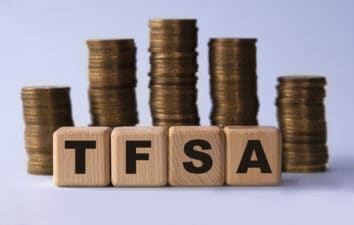House prices are crashing in Canada’s biggest cities. In Toronto, Vancouver, and elsewhere, prices are coming down, following decades of consistent gains. In July, house prices fell 5.3% nation-wide, with the biggest declines being recorded in large urban centres. Since the crash began in March, prices have fallen 22% from the $816,000 peak.
For younger Canadians, this may be taken as good news. Millennials have been complaining about high housing costs for years, now prices are finally within reach. For now, interest rates are taking a bite out of affordability, but if the current trends continue then house prices could fall to a level where total costs (price + interest payments) decline.
However, there’s one catch…
These price declines aren’t happening evenly across the country. The biggest declines are being observed in big cities; smaller markets are seeing lesser declines. In fact, in the Maritimes, prices are barely declining at all.
In this article, I’ll explore the possibility of the “big city housing crash” spilling over to smaller markets.
Housing crashes in Toronto
Toronto is the poster child of the housing market correction this year. Its prices are down to pre-pandemic levels and still falling. While house prices in smaller cities are generally lower than those in Toronto, the latter has a larger percentage decline. Since February, Toronto has seen a staggering $395,000 decline in house prices. Vancouver, as we’ll see shortly, is in the same boat.
Vancouver in the same boat
Vancouver, like Toronto, is seeing a significant housing correction this year. According to The Daily Hive, the average Vancouver home price is down 25% from the February peak. That’s well ahead of the 22% correction seen nationwide. Vancouver was long known as a top destination of foreign homebuyers. The city implemented a foreign home buyer tax to cool the market several years ago, which may have contributed to this year’s correction.
Smaller markets next?
Having looked at the real estate activity in Toronto and Vancouver, we can now turn to the matter of smaller markets. There are two forces pushing Toronto and Vancouver house prices down this year:
- Interest rate hikes
- Extreme valuations in 2021
Interest rate hikes should affect small markets just like big ones. When the Bank of Canada Raises interest rates, banks like Canadian Imperial Bank of Commerce (TSX:CM)(NYSE:CM) increase mortgage rates.
When this happens, home buyers who borrow from CM pay higher interest costs on homes of the same price. Basically, it makes the total cost of buying a home go up. As a result, the price tends to fall.
Additionally, a bank like CM will be aware of how higher interest rates affect peoples’ ability to borrow. It may require bigger down payments or higher income before issuing a loan. Recently, the government brought in regulations requiring CM and other banks to more closely scrutinize peoples’ finances before giving them mortgages; this could be putting downward pressure on prices, too.
All of the above applies to large cities as well as small ones. The valuation thing … not as much. Canada’s extreme February prices were largely a function of $1 million plus average prices in the biggest cities. In places like St. John’s and Moncton, you can still find houses for $300,000. So, perhaps those markets were never overvalued like Toronto and Vancouver were. If so, prices there may fall less compared to the big cities.









